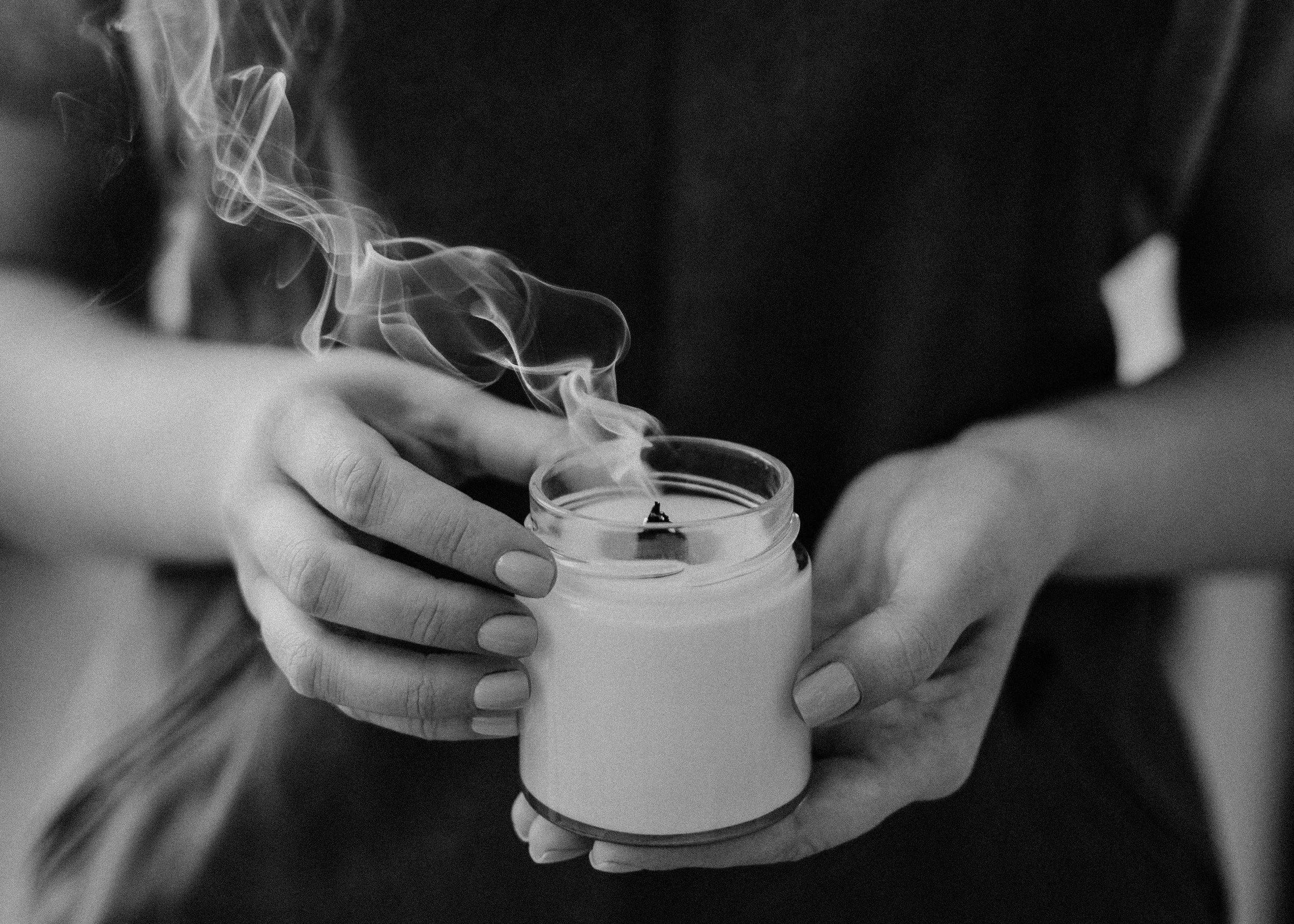10 Strategies to Manage Panic Attacks
Panic attacks can feel really overwhelming, and honestly, pretty terrifying. If you’ve ever had one, you know how intense it can be. Your heart starts racing, your chest feels tight, it’s hard to breathe, and your brain just blanks. It’s like your body is sounding every alarm at once, even if nothing “dangerous” is happening in the moment.
When you are already carrying a lot, having a panic attack can feel like the last straw. You’re just trying to get through the day, check things off your to-do list, and suddenly your body says, “Alright, that’s enough.”
The good news? Panic attacks are manageable. There are easy, effective ways to help calm your body and remind your nervous system that you’re safe. And the more you understand what’s happening, the less powerless you’ll feel if it shows up.
What Is a Panic Attack?
Before we get into how to cope, it helps to understand what a panic attack actually is. A panic attack is a sudden surge of fear or discomfort that often comes on quickly and can feel really intense. Even if there’s no real danger around you, your body reacts like you’re in serious trouble. It’s your fight-or-flight response kicking in, and it can feel like something is very wrong, even if you can’t quite explain what or why.
What’s happening in the brain during a panic attack?
The amygdala, which is essentially your brain’s “fear center,” may be in overdrive. This part of your brain can work like an internal alarm system that’s meant to keep you safe. But during a panic attack, it can sound every alarm, even when there’s no actual threat or danger. The alarm then triggers the release of stress hormones, like adrenaline, throughout your body. Meanwhile, the prefrontal cortex, which is the part of your brain responsible for logic and reasoning, tends to slow down, making it harder to think clearly or reassure yourself in the moment.
It’s kind of like your body thinks you're being chased by a tiger, even if you’re just sitting on the couch. And sometimes, panic shows up after you've been carrying too much for too long. It can be your body’s way of saying, “I need you to slow down and pay attention.”
Common signs of a panic attack include:
Rapid heartbeat or palpitations
Shortness of breath or a feeling of being unable to breathe
Chest pain or tightness
Dizziness or lightheadedness
Sweating, chills, or hot flashes
Trembling or shaking
Nausea or stomach discomfort
A sense of detachment from reality or feeling “out of body”
Fear of losing control or dying
The symptoms of a panic attack can be so intense that many people think they’re having a medical emergency, like a heart attack. It makes sense, because the fear feels so strong, and there can be overlapping symptoms. But remember, what’s actually happening is that your body’s fight-or-flight response is going into overdrive.
Panic attacks can happen to anyone, but they tend to show up more often in people who’ve experienced trauma or who live with anxiety. Trauma and anxiety can make the “alarm” in your brain more sensitive. Having multiple panic attacks can also lead to panic disorder. Knowing that a panic attack is your nervous system trying to protect you can help take some of the fear out of it. When you understand what’s going on, it becomes easier to meet the moment with compassion and use strategies that help you feel more grounded.
Here’s 10 Strategies You Can Try:
5-4-3-2-1 Technique: Identify five things you can see, four things you can touch, three things you can hear, two things you can smell, and one thing you can taste. Intentionally focusing on your senses can help shift your focus away from the panic and onto your surroundings to help calm your nervous system.
Cold Sensations: Splash cold water on your face, hold an ice cube, place a cold pack on the back of your neck, or take a cold shower. The sudden temperature change can help “shock” your nervous system out of a heightened state and bring you back to the present moment.
Activate Your Senses with Something Sour: Another similar tip is to eat or suck on something sour, like a lemon slice or sour candy, to activate your senses and interrupt the panic response.
Use a Grounding Object: If you experience panic attacks regularly, having a grounding object nearby can be really helpful. Try keeping a small stone, stress ball, or fidget toy with you. When you start to panic, focus on the texture and weight of the object to help bring your attention back to the present moment.
Progressive Muscle Relaxation: On this exercise, you'll gently tense and relax one muscle group at a time. Start at your toes. Tense the muscles for 5 seconds, then slowly release. Move upward and do the same thing for each muscle group: feet, calves, thighs, hands, arms, shoulders, jaw, face. As you tense and release each muscle group, notice the difference between tension & ease. This helps your body feel calmer & more relaxed. You can also find many great videos to help guide you through this exercise.
Write Down Your Thoughts: Jotting down your thoughts and feelings can help you create distance from what you’re experiencing. Try writing them out, then scribbling over the page, tearing it up, or throwing it away. The goal is simply to get the thoughts out of your head and onto paper.
Gentle Movement: Take a short walk, stretch, or move your body to shift your focus back to moment and physical sensations. If these movements feel like too much, start by wiggling your toes, rolling your neck, or shaking out your hands. Then, build from there.
Name What’s Happening: Panic attacks can feel scary because they often come with a fear of losing control or not knowing what’s happening. One way to reduce this fear is to simply name what’s happening. Remind yourself:
“This is a panic attack.”
“I’m feeling overwhelmed.”
“This is uncomfortable, but it’s temporary.”
Visualize a Calm Place: Close your eyes and picture a place where you feel at ease. It may be a beach, a forest, a cozy room, or somewhere meaningful to you. Imagine the details: what you see, the temperature on your skin, the sounds, the colors, the scents. Stay in this space for a few moments to allow your mind and body to relax.
Use Slow, Deep Breaths: Close your eyes and take long, slow, deep breaths. Inhale through your nose for a few seconds, then exhale slowly through your mouth. Try to make your exhale slightly longer than your inhale.
Final Thoughts
Panic attacks can feel intense and all-consuming, but there are strategies that can help, and it’s possible to find what works best for you. Therapy can help you not only manage the symptoms but also understand what’s underneath the panic and what your anxiety might be trying to tell you. With the right support, it’s possible to feel more grounded, calm, and in control again. If you’re ready to take the next step, I’d love to support you. Reach out today to schedule a free consultation.
Michaela Zoppa is a Licensed Professional Counselor (LPC) in Colorado Springs, Colorado. She supports women and teen girls navigating anxiety, perfectionism, trauma, and burnout. She uses evidence-based, trauma-informed modalities, including EMDR and Internal Family Systems (IFS) therapy.







